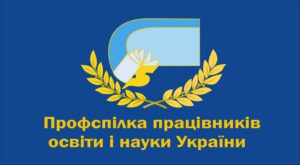
Trade Union of workers of education and science of Ukraine believes that the proposed increase in teaching load threatens to dismiss more than 70 thousand teachers.
“The Committee on education, science and innovation of the Verkhovna Rada decided to amend the law on the state budget of Ukraine to the laws ”On education“, ”On full general secondary education“, ”On vocational pre-university education“, ”On vocational education”. The norm of a teacher’s teaching load has been increased from 18 to 22 hours per week, which threatens to reduce by 22.2% the rates of teachers and, as a consequence, – dismissal of more than 70 thousand teachers”, – the trade union said in a statement.
It is noted that the changes are also proposed, which will lead to a reduction in seniority bonuses for those teaching staff with a teaching experience of 10 to 20 years, as well as deprive the right to seniority bonuses for teaching staff with a record of 5 to 6 years.
In addition, it is proposed to cancel the increase in wage rates for the pedagogical titles of “teacher-methodist”, “senior teacher”, “senior tutor”, “tutor-methodist” and other pedagogical titles assigned to pedagogical workers who ensure the educational process at a high professional level.
Among other things, the trade union draws attention to the fact that the Committee considers it necessary to introduce a 36-hour working time for teachers, circle leaders, as well as for all other teaching staff of the institution of general secondary education.
“The above decision of the Committee on Education and Science of the Verkhovna Rada does not comply with Article 22 of the Constitution of Ukraine, according to which the adoption of new laws or amendments to existing laws is not allowed to narrow the content and scope of existing rights and freedoms”, – says the statement.
In connection with the above, the Trade Union of Workers of Education and Science of Ukraine calls on the head of the Education Committee, people’s deputies to withdraw from the Committee on Budget the above proposals, which concern the narrowing of labor rights of teaching staff.
“We express a categorical protest to the proposals proposed in the conclusion of the Committee on amendments to the draft law ”On the state budget of Ukraine for 2026“ for the second reading and call on the people’s deputies of Ukraine, the head of the Verkhovna Rada of Ukraine, heads and members of the Committees on budget, finance, tax and customs policy in the adoption of the law in the second reading to prevent the adoption of these illegal changes that will lead to the violation of labor rights of teaching staff of educational institutions,” – said in a statement.
As reported, the educational ombudsman Nadezhda Leshchik considers it necessary to start a dialog between teachers and the authorities in Ukraine on whether to increase the pedagogical load of teachers on the condition of an increase in salary.

Insurance premiums accrued under international Green Card insurance contracts concluded by member companies of the Motor (Transport) Insurance Bureau of Ukraine (MTIBU) in January-October 2025decreased by 3.74% compared to the same period in 2024, to UAH 4.620 billion. According to the MTIBU website, the number of Green Card contracts concluded during this period decreased by 4.52%, to 1.204 million.
At the same time, the amount of compensation paid on claims increased by 2.07% to EUR 42.629 million, while the number of claims paid decreased by 7.03% to 12.3 thousand.
The MTIBU is the only association of insurers providing compulsory civil liability insurance for owners of land vehicles for damage caused to third parties.
The Green Card is a system of insurance protection for victims of road traffic accidents, regardless of their country of residence and the country of registration of the vehicle. It is valid in 45 countries in Europe, Asia, and Africa.
According to the decision adopted by the General Assembly of the Council of the International Motor Insurance Bureau “Green Card” in Luxembourg in May 2004, Ukraine has been a full member of this system since January 1, 2005.

More than 13.3 thousand new food service businesses have opened in Ukraine this year, according to the Unified State Register. At the same time, more than 10.6 thousand food outlets have ceased operations. This year, the growth of new cafes and restaurants has more than halved. Half of the cafes and restaurants that closed this year had been in operation for less than a year and a half.
13,373 new food service outlets were opened in Ukraine this year. This is 5% less than in the same period last year. September was the most active month, with 1,699 new establishments opening.
At the same time, 10,645 cafes and restaurants ceased operations over the same period. Overall, this year’s growth of new entrepreneurs amounted to +2,728 establishments. For comparison, last year’s increase amounted to 6,004 new businesses.
The largest number of new HoReCa fops were opened this year in Kyiv (1,693), Dnipropetrovs’k (1,323), Lviv (1,136), Odesa (1,113), and Kyiv (1,054).
The restaurant business in Ukraine is currently predominantly a women’s business: 66% of new business owners are women. In some regions, this figure exceeds 70% – in particular, in Khmelnytskyi, Kirovohrad, Zakarpattia, Cherkasy, and Rivne. In no region do men prevail in terms of the number of new openings.
A quarter of the fops closed this year had been in operation for less than six months. In general, the median life of small and medium-sized businesses in HoReCa is 17 months. The oldest restaurant fop that closed this year had been operating since 1992.
Despite the decline in the number of new establishments, according to the Ukrainian service Poster, the revenue of public catering establishments increased by 6%, but this cannot be called a significant success. Attendance decreased by 9%, so the growth is due to higher prices rather than an increase in customers. The average check in restaurants has grown by 11% since the beginning of the year.
“Revenue growth of 6% is not real earnings, but catching up with inflation. The average check grew due to higher food prices and operating expenses for rent and payroll. The industry’s problems are exacerbated by the outflow of employees after legislative changes to the age of 18-22 and a decrease in the purchasing power of the population.
Despite the challenges, we do not currently see a massive outflow of customers at Poster – the number of existing establishments and those preparing to open remains within the average. The winter months are always a stressful test for the industry – not everyone passes it successfully, but in the spring new establishments open and the market is renewed,” comments Rodion Yeroshek, CEO and co-founder of the Ukrainian restaurant automation company Poster.
According to Poster, attendance has dropped across Ukraine this year. Looking at the top 5 big cities, it looks like this:
Lviv – -8%.
Odesa – -6%.
Kyiv – -13%.
Dnipro – -11%.
Kharkiv – -7%.
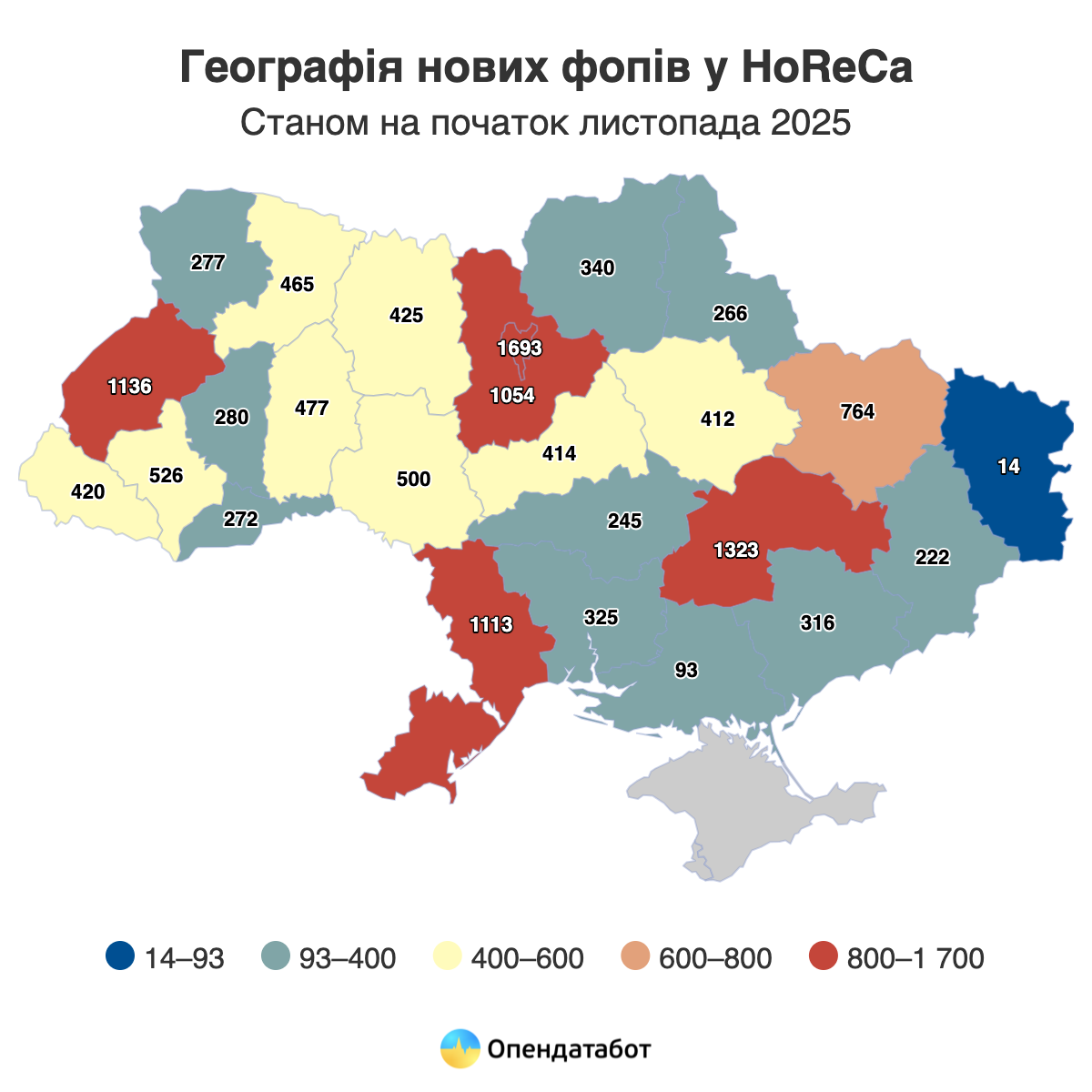
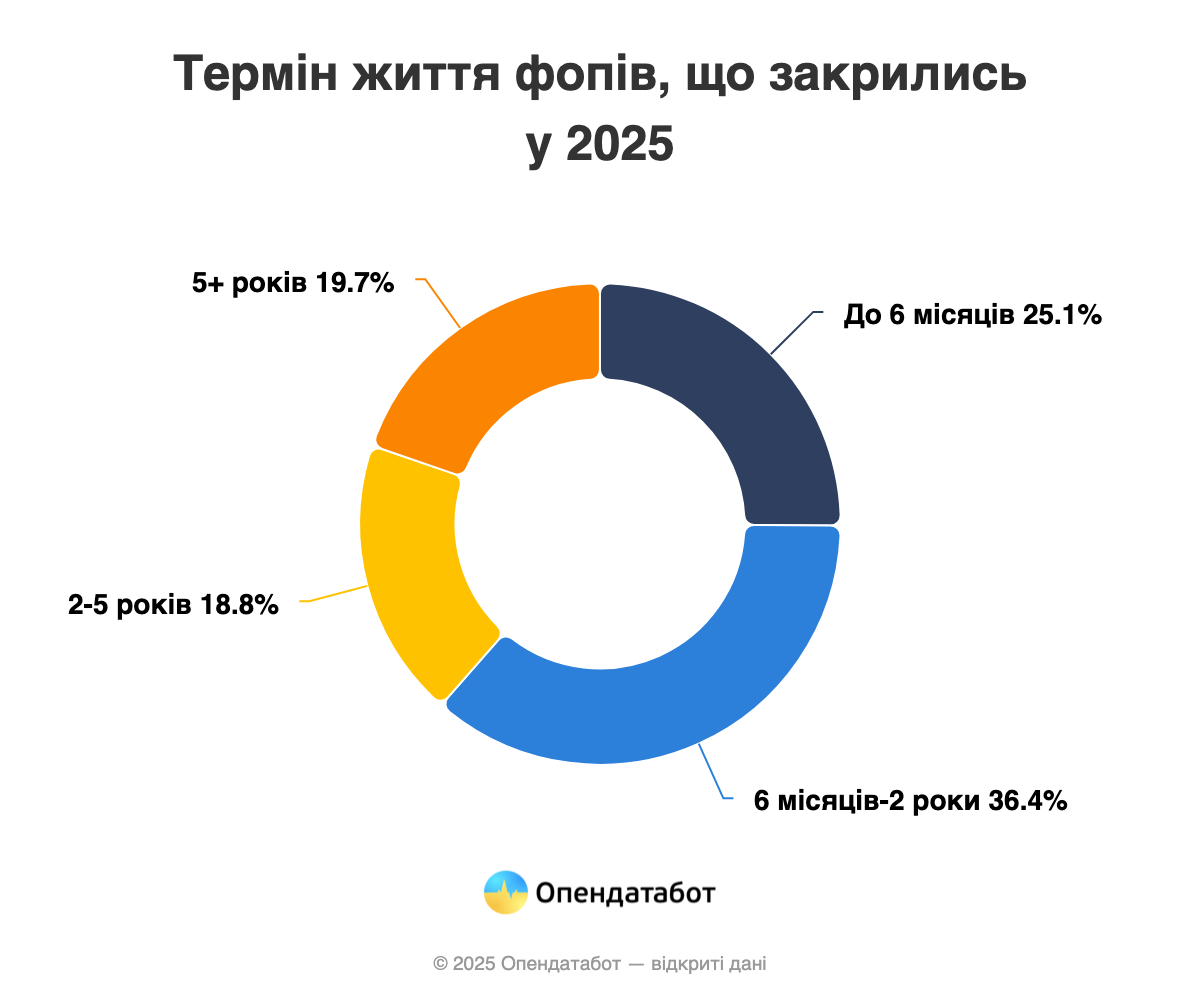
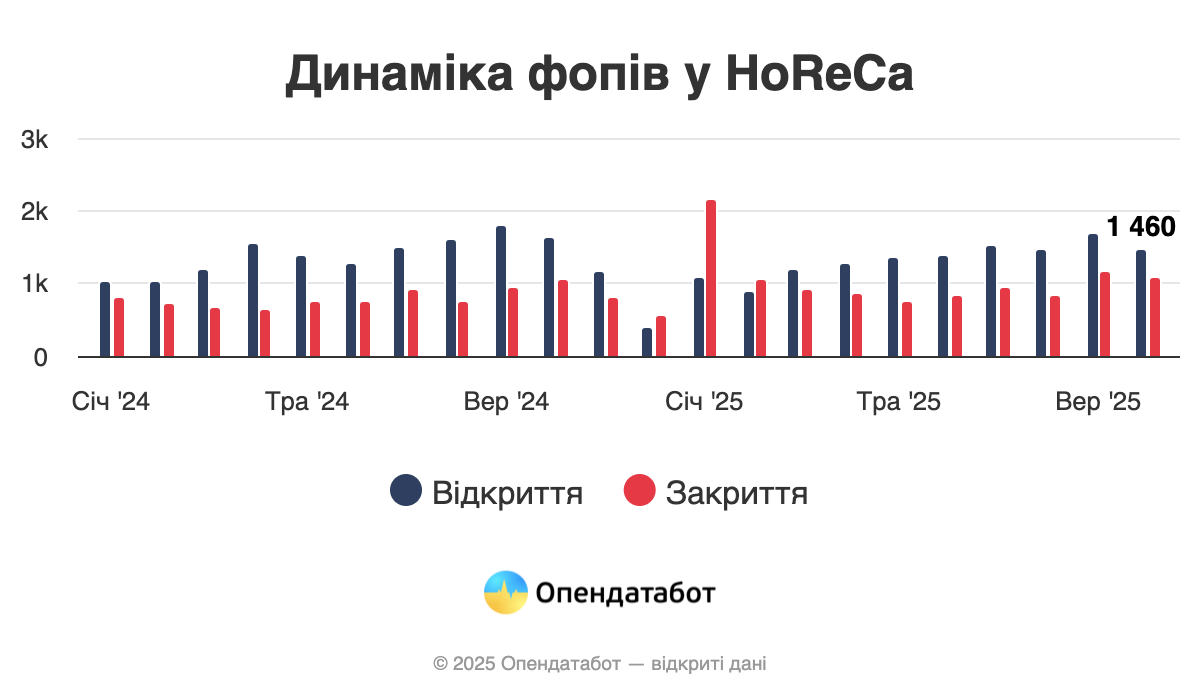
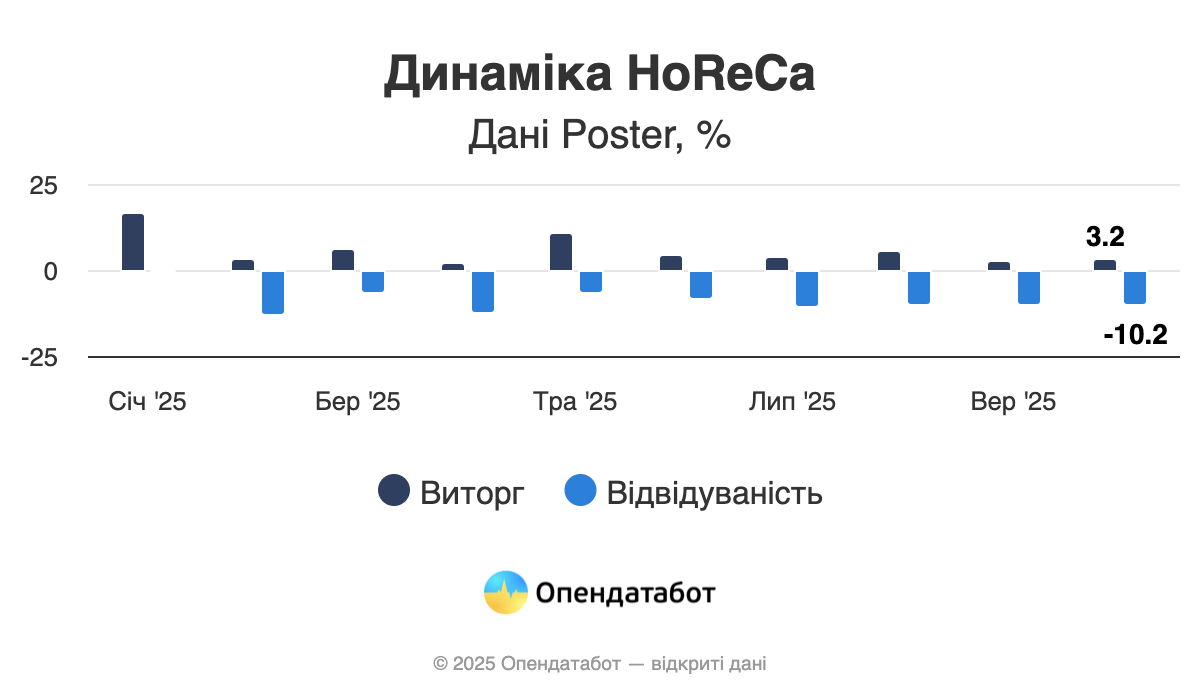
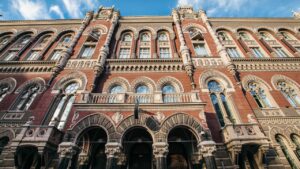
The number of banks in Ukraine in October 2025 has not changed and is 60, according to the website of the National Bank of Ukraine.
According to the regulator, the number of banking groups is also unchanged – 16. 15 payment systems created by residents, including state-owned ones, and 10 international payment systems continue to operate in the payment market.
Among payment service providers there are 16 payment institutions (17 a month earlier), 12 financial institutions authorized to provide payment services, one bank – issuer of electronic money, and one postal operator. Other payment market entities include 49 commercial agents and 32 technological payment service providers.
In October, the NBU received 243 requests for registration and licensing actions, including 41 requests for banks, 131 requests for financial companies, pawnshops and lessors, 55 requests for insurers, 14 requests for credit unions and collection companies, and 2 requests for payment institutions.
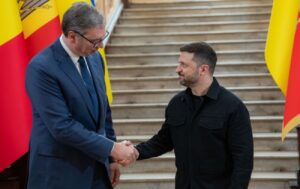
According to Serbian Economist, Ukrainian President Volodymyr Zelensky held a telephone conversation with Serbian President Aleksandar Vucic, during which the parties discussed European integration in detail and agreed to stay in touch. Zelensky reported on the conversation on his Telegram channel. The leaders also touched on coordination on regional security and the immediate international agenda.
We remind you that the day before, the European Commission published its annual reports on EU enlargement. The document on Serbia notes both the advanced elements of reforms and sensitive issues of foreign policy alignment with the EU. Vučić publicly reiterated his position that membership should be assessed on the basis of merit criteria rather than political alignment, against the backdrop of discussions on sanctions policy and dialogue on Kosovo.
At the same time, Kyiv is seeking to accelerate its own negotiation track with the EU. On the day the enlargement package was published, Zelensky called for the process to be brought to the opening of all clusters and for accession to be targeted by 2030, recognizing the need for further anti-corruption and institutional reforms.
In the context of the European Commission’s report, Belgrade is set to engage in dialogue with Brussels on aligning its foreign policy and economic agreements, while Kyiv is focusing on implementing recommendations for the next stage of negotiations. The positions of the leaders following the conversation indicate a willingness to maintain working contacts and exchange experiences in sectors related to the European agenda.
The previous confirmed call between Zelensky and Vučić took place on May 22, 2025.
https://t.me/relocationrs/1685
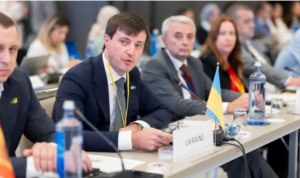
Ukraine is participating for the first time in the 48th session of the General Fisheries Commission for the Mediterranean (GFCM) in Malaga on November 3-9, 2025, as a full member. The updated list on the FAO website states that Ukraine became a contracting party on September 11, 2025.
The Commission consists of 24 contracting parties: Albania, Algeria, Bulgaria, Croatia, Cyprus, Egypt, the European Union, France, Greece, Israel, Italy, Lebanon, Libya, Malta, Monaco, Montenegro, Morocco, Romania, Slovenia, Spain, Syria, Tunisia, Turkey, and Ukraine. Five cooperating non-contracting parties are also involved in the work: Bosnia and Herzegovina, Georgia, Jordan, Moldova, and Saudi Arabia.
The official program of the session will take place from November 3 to 9, 2025. The decisions will be published by the FAO after the session closes. FAOHome